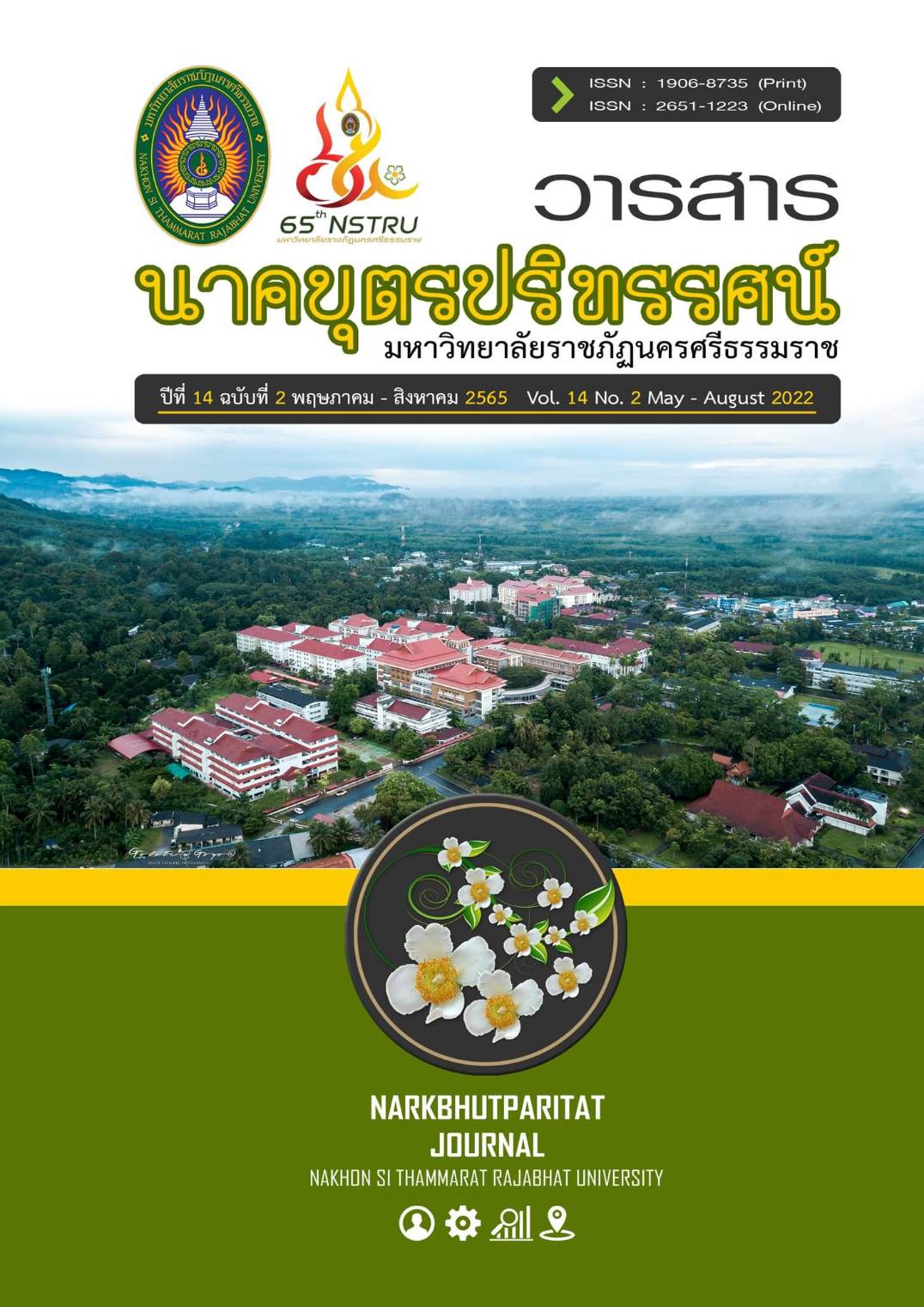Physical Activity Behavior of The Official in National Research Council of Thailand
Main Article Content
Abstract
This research was aimed to study the physical activity behavior of the Official in National Research Council of Thailand.The population were 429.The instrument was a questionnaire used to find content validity by the index of item - objective congruence (IOC). The content validity for the questionnaire was judged by 5 experts according to Rovinelli and Hambleton method were between 0.60 –1.00 and finding reliability by used KR-20 formula at 0.68 Data collection were distributed to the population and a total 429 respondents were completed (100%) and returned to the researcher. Data were analyzed by using mean and percentage.The findings were as follows:
1) The most common daily behavior of the official was dish-washing, accounted for 94.88% and 10.90 METs/week. The least common one was car-washing, accounted for 28.43% and averages 1.14 METs /week
2) The most working behavior was checking the working on their computer, accounted for 97.67% and averages 9.26 METs/week.The least was walking while carrying 23-24 kg weight, accounted for 62.23% and averages 1.97 METs/week. For most Daily commuting behaviors was mainly walking accounted for 52.44%and averages 6.06 METs/week. The least was cycling, accounted for 47.09% and averages 0.99 METs/week.
3) The most exercising behavior was walking, accounted for 82.05% and averages 16.88 METs/week. For the most leisure-time behavior was going to shopping malls, accounted for 84.15% and averages 3.28 METs/week. The least was crafting, accounted for 16.78% and averages 0.68 METs/week.
4) The most sedentary behavior was using mobile phones, accounted for 99.07% and averages 6.40 METs/week. The least was gaming while sitting, accounted for 52.44% and averages 2.46 METs/week.
5) The 58.97% of National Research Council of Thailand’s personnel, both male and female, was in the range of BMI between 18.50-24.99 kg/m2 which fell in the normal range.
Article Details

This work is licensed under a Creative Commons Attribution-NonCommercial-NoDerivatives 4.0 International License.
References
Boonchai, K. (2011). Alternative Assessment In Physical Education. Bangkok: Physical Education Kasetsart University. (in Thai)
Department of Health. (2017). Physical Activities Encourage Model 2018- 2030. Bangkok:
NC Concept. (in Thai)
Department of Physical Education. (2018). Relationship of Nutrition and Exercise. Bangkok: Ravin Printing Group Part. (in Thai)
Krabuanrat, C. (2013). Physical Activity. Journal of Health, Physical Educktion and Recreation of Thailand, 39(1), 5-6. (in Thai)
Miller, L.H. et al. (1972). Encyclopedia and Dictionary of medicine and Nursing. Philadelphia: WB Saunders.
Ministry of Public Health. (2018). Situation on NCDs Prevention and Control in Thailand. Retrieved 2019, October, 24, from http://www.thaincd.com/document/file/download/paper-manual/NCDUNIATF61.pdf. (in Thai)
National Statistical Office. (2016). Usage of Communication Technology and Communication inHousehold 2016. Retrieved 2019, October, 22, from www. http://service.nso.go.th. (in Thai)
Prathipawanitma, P. (2016). Office Syndrome Capital Disease. Retrieved 2019, October, 23, from www.never-age.com/347-1-Office%20Syndrome%. (in Thai)
Sriramatr, S. (2014). Physical Activity for Wellness. Bangkok: Chulalongkorn University (in Thai)
Tansalee, Y. (2015). Applying Transtheoretical Model to Promote Physical Activity Behaviors of Kasetsart University Personnel. (Doctor of Philosophy Thesis.) Kasetsart University, Major Field: Physical Education, Department of Physical Education. (in Thai)
Thai Health Promotion Foundation. (2016). 3 Level of Construct Physical ActivityRetrieved 2019, October, 15, from www.thaihealth.or.th/Content/338639A.html. (in Thai)
World Health Organization. (2015). Global Strategy on Diet, Physical Activity and Health Retrieved 2019, October, 11, from www. who.int/iris/bitstream/handle/10665//10665//43035/


